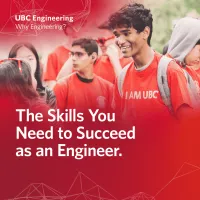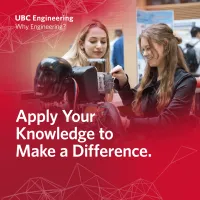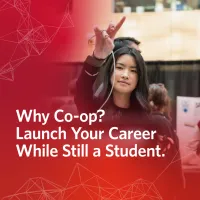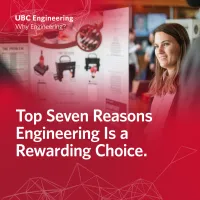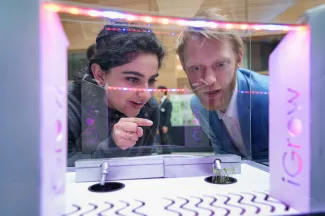"Design teams are a great way to start doing actual engineering work. Engineering is all about applying your knowledge, and working on projects is where you learn the most."

Brendan Chong
- Degree:
- Bachelor of Applied Science
- Grad year: 2024
- Program:
- Campus: Vancouver
Job: Junior R&D Engineer, Sanctuary AI
What got you interested in engineering?
I always liked hands-on activities and building things from scratch, whether that was playing with Lego or playing around with 3D printing.
One of the things that made me excited about Integrated Engineering at UBC was the freedom it offered to transform your ideas into reality.
There are tools and spaces to do that – like the IGEN MakerSpace – and you are encouraged to develop those ideas into business concepts.
Integrated Engineering IGEN MakerSpace
Were you part of any design teams?
Yes, I was part of Uncrewed Aircraft System as a payload designer where I led the creation of the team’s first composite fuselage for a model air taxi. I also worked as a structural designer with Third Quadrant Design where I drafted the foundation for the Third Space building on campus by doing the specs for the helical piles and verified structural load cases.
Design teams are a great way to start doing actual engineering work. Engineering is all about applying your knowledge, and working on projects is where you learn the most.
It’s interesting because you can do some quite advanced stuff, even if you are a year behind on the theoretical knowledge that you’ll be covering in your upcoming courses.
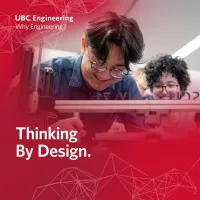
UBC Unacrewed Aircraft Systems Third Quadrant UBC
Tell us about your co-op experiences.
I worked for four different companies in many different roles: in project coordination with BA Blacktop, cost estimation with Charter Project Delivery, in product design for Dometic (a company that creates actuators for marine steering applications), and in product design for the material flow team at Tesla’s Gigafactory in Austin, Texas, working on automated lines for the Cybertruck and new vehicles.
I’d like to talk about the first and the last co-op terms. On the first, I was working as a project coordinator for Blacktop, which was working on a taxiway repair project at the Vancouver Airport. So there was a fair amount of shovelling asphalt, jackhammering concrete as well as doing some inspections. It was very labour intensive and long hours. It’s important work and it’s important as an engineer to have done it.
Applied Science Co-op Program BA Blacktop Charter Project Delivery
As my manager emphasized, timelines and scheduling are part of the job of an engineer, and you need to be thoughtful about the implications of your design on the production side or those who are implementing your ideas.
This experience helped me build a design philosophy based on this empathetic aspect.
Tesla was very fun. I was working in Austin as a manufacturing engineering intern and I was able to apply all my design skills and knowledge to the work, while making lots of new connections. I was working on material flow automation, which is where you design the systems and devices to carry parts of the car from point A to point B as fast as you can. My designs are still being developed and there are plans to implement them.
Tell us about your job.
I’m working as a Junior Research and Development Engineer on robotic hands at Sanctuary AI, a company with a mission to create the world’s first human-like intelligence in general purpose robots to help address growing labour challenges. I am working on the design, verification, analysis, testing and rapid prototyping of robotic hands. Every day is very exciting – there are always new challenges and I am constantly learning. I’m working at the forefront of innovation and am super happy with where I am at.
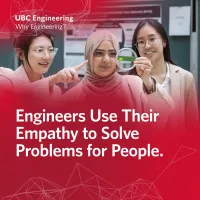
Any tips for students embarking on a job search?
I am not going to lie: it wasn’t an easy process and it took longer than I thought. I had started my search in January and felt I wasn’t getting anywhere. What eventually worked was making sure I was matching the keywords in my resume with the keywords in the job application.
The second was to include a portfolio so people making hiring decisions could see examples of my work rather than just reading about it.
The last thing is networking. The way I got my current job was by talking with a friend (Robotics Expert, Marko Jurisic), who was working at Sanctuary in an area I was interested in. Through him, I was put in touch with my current boss, had a few interviews, and was then offered a position.
